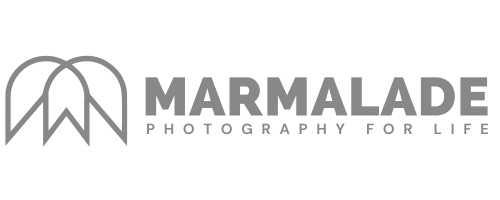I have teamed up with a group of truly talented children’s photographers to bring our blog readers some information on working with custom photographers. Below you will find some relevant information on archival storage for your photos. Once you are finished with my article please check out the next custom photographer in our Blog Carousel line up – linked below. ENJOY!

 The ultimate investment in the longevity of your families’ memories isn’t digital media. I know, I know…you’ve been told by numerous people that that’s the way to go but honestly it’s a huge misconception among many partly because digital photography is all the rage and it’s easy, right? The truth isn’t so easy though: digital media is really meant to be temporary storage. Hard drives fail, burned CDs and DVDs become inoperable, types of storage media fade into antiquity before data can be transferred, off site storage companies go bankrupt, SD (or compact flash or micro SD or Memory Sticks) have, can and will fail at some point. The only REAL way to achieve longevity of your images is via printed photographs.
The ultimate investment in the longevity of your families’ memories isn’t digital media. I know, I know…you’ve been told by numerous people that that’s the way to go but honestly it’s a huge misconception among many partly because digital photography is all the rage and it’s easy, right? The truth isn’t so easy though: digital media is really meant to be temporary storage. Hard drives fail, burned CDs and DVDs become inoperable, types of storage media fade into antiquity before data can be transferred, off site storage companies go bankrupt, SD (or compact flash or micro SD or Memory Sticks) have, can and will fail at some point. The only REAL way to achieve longevity of your images is via printed photographs.
So you have your beautiful photos in hand and ready to go. Perhaps you have just received a full set of printed images from your favorite professional photographer and you wonder… “NOW WHAT?” Perhaps you have a boxful (or several boxfuls) of snap shots, personal images that tell the story of your family’s life. What are the steps that one should take to preserve the investment of memories? What can you do so they can be passed down to future generations? Here are some guidelines to help you with this task.
What you should do:
- Photographs should be protected from extended exposure to intense light sources, particularly direct sunlight. Sunlight causes damage to the chemical composition of photographs, resulting in color shifts and fading. Sunlight (and its’ accompanying heat) may cause warping of your artwork. If you choose to display a wall portrait in an area hit by sunlight, you should invest in museum-quality glass with UV protection. This type of glass minimizes the potential for fading and color shifting. However you should probably evaluate placing photos or other precious momentos in sunlight because it is so damaging.
- If you choose to frame your photographs under glass, always use either a mat or spacers so that the photograph does not come into direct contact with the glass. If a print is in contact with glass, over time moisture will cause the print to become permanently stuck to the glass. A reputable professional framer will do this for you however if you buy an off the rack frame try to have a mat with it to avoid the image touching the glass surface.
- Most damage to photographs results from poor handling. When handling your prints, be sure your hands are clean and dry. Always handle photographs by their edges. Never touch the image surface because the oil in your skin can damage the print. Better yet, use white acid free gloves to handle your images.
- Always use albums with acid-free paper or use photo sleeves made of polyester, tri-acetate or polyethylene. Look for albums that have a neutral acidity, are labeled “acid free” or designate an acidity level of 6.0 or higher.
- When identifying your photographs, use a soft-lead pencil to write on the back, near the bottom of the photograph. Please do not label your photographs with a pen; the ink will bleed through onto the image.
Some don’ts:
- Don’t use albums that are not designated “acid and lignin free”. Most photo albums are actually harmful to your photos and while they may keep them organized they will be prone to fading and yellowing due to the acidity of the paper and/or adhesive unless the album was manufactured for archival use. Lignin is in all paper products but archival papers have lignin removed. Lignin is an important compound that happens to be the second most common biocompound on earth BUT that makes it bad for archiving. When liginin breaks down it turns paper brown. If you have ever seen an old newspaper, turned brown by age – that’s the lignin breaking down.
- Never use self-adhesive or magnetic albums. Conservators have tested the “magnetic” quality of these albums and have found that the adhesive contains very high levels of acid. The acid from the adhesive was literally eating away at the backside of the photos tested. Even worse, the plastic cover that covered the magnetic page to keep these photos “safe” was actually sealing in the acidic fumes causing deterioration on the front as well as the back.
- Never use adhesive tape, glue, metal paper clips, thumb tacks, or rubber bands on photographs-all can cause damage.
- Never use pens that are not labeled acid free. Better yet always use a soft lead pencil to avoid damage. Even pens that are labeled “acid-free” can contain minute amounts of harmful acids and this will take a toll on your photos that labeled with that ink.
- Do not include momentos such as postcards, ticket stubs, etc with your photographs. Those items are often manufactured/printed with acid containing ink which can cause photos to fade away.

 Please keep in mind that these are just a few important guidelines for caring for your portraits. I have collected much of this information over the years via discussions with my professional photo developers and research on the web and share this with each and every one of my clients. I hope this helps dissolve some of the mystery associated with archiving and storage of printed imagery.
Please keep in mind that these are just a few important guidelines for caring for your portraits. I have collected much of this information over the years via discussions with my professional photo developers and research on the web and share this with each and every one of my clients. I hope this helps dissolve some of the mystery associated with archiving and storage of printed imagery.
If you would like, feel free to print this information out for future reference, perhaps keeping this guide with your scrapbooking supplies or wherever you may keep your photos for archiving/storage. If you plan on using this information for web usage to post on your site or blog please credit back to me here at http://www.marmaladephotography.com
Happy archiving!
• • • • • • • • • •
Now it’s time to check out the next Blog Carousel photographer, Amanda Padgham, Rochester’s Child and Family Photographer of Choice for her article on the importance of printed vs. digital imagery.













SOOOO full of wonderful info!! Thanks Mare- this is incredible!!!
very informative, Mare!
This is fantastic advice! I completely agree with you that digital media is a temporary storage solution only. I have heard some many times in the last few years about people losing precious images because of one of the problems you outlined. It would be deveasting to lose for example, you babies first year images (yes, I know someone this happened too!). Great advice on handling prints.
This is such a wonderfully thought out post! I think I may have to link to this from my blog permanently 🙂 thank you for sharing all this information.
THANK YOU! This is so badly needed! I think people are getting desensitized to their images because there are so many, but it is so important to think about preserving them! Great tips!
Great information – I will be saving this link for my clients to peruse!
First, I love that you mentioned digital media is temporary. Thank you!! I love all of your advice here, these things can easily be forgotten and after such an important investment it would be a shame to have damage on one’s portraits. Lovely article!!
Oh my gosh, I can’t tell you how many cds of personal photos that I thought were safe forever and now I can’t access them. Or how about my own childhood memories ripped, faded and stuck in old albums or in glass frames. How I wish the generation before me had some of this invaluable information and resources…I would then have photos of my childhood to share with my own children.
Awesome advise. I’m going to share this on my fan page for sure!
Awesome article, and so choc full of information! Couldn’t have written it better myself. Will definitely be linking back to you on my site…
Excellent advice Mare! What seems like common sense information is unknown by a magority of people.
GREAT article! After the Northridge,CA earthquake I ended up with some of my most precious portraits of my children ruined because they weren’t matted. They had stuck to the glass and when the glass shattered it tore them apart. I had the same problem trying to take others out of old frames. Had I used matting I’d still have them intact. Have already had the disappointment of losing early digital images that were never printed from the cds. I hope your information helps people preserve their treasured portraits to enjoy for years and pass along to future generations.